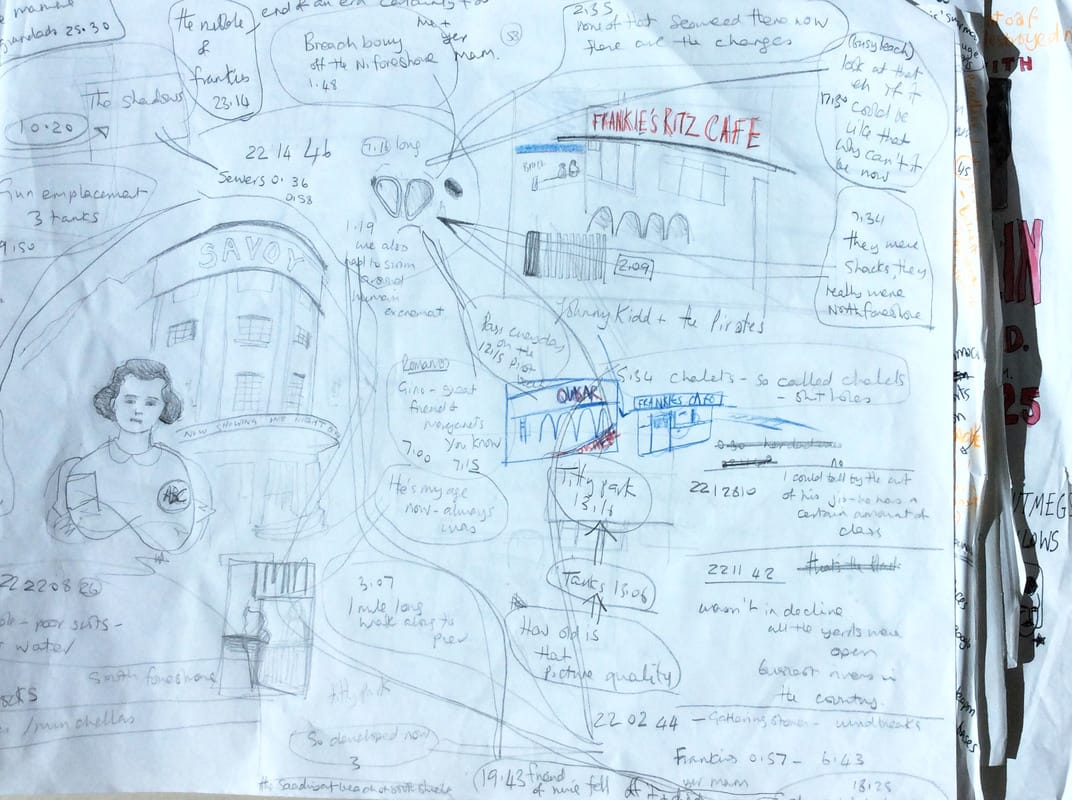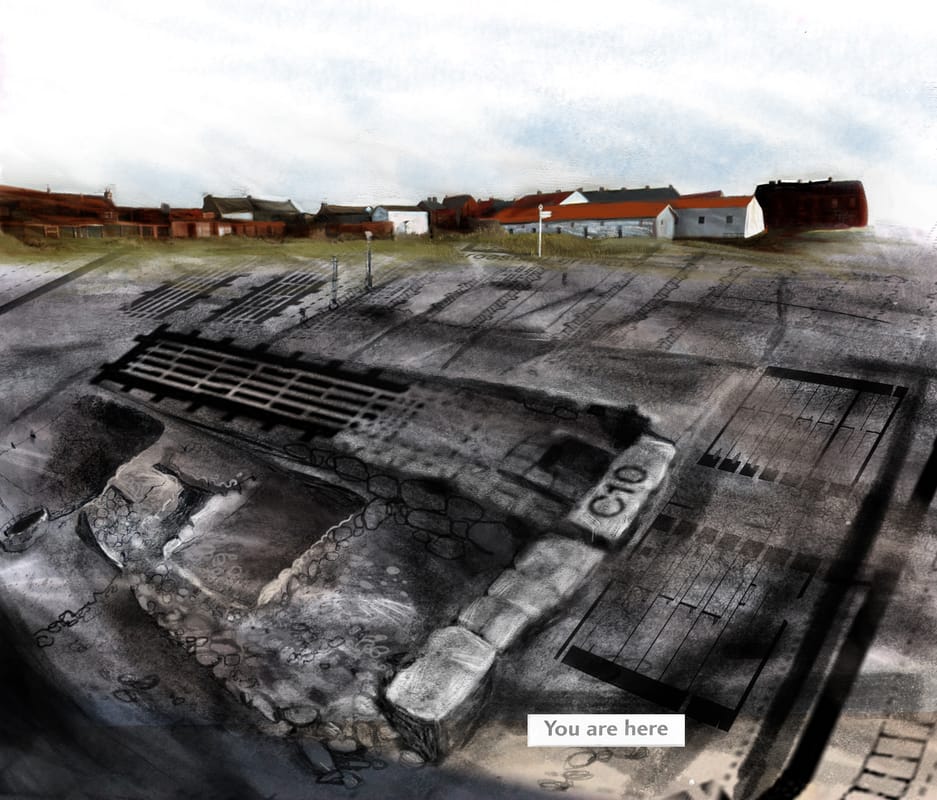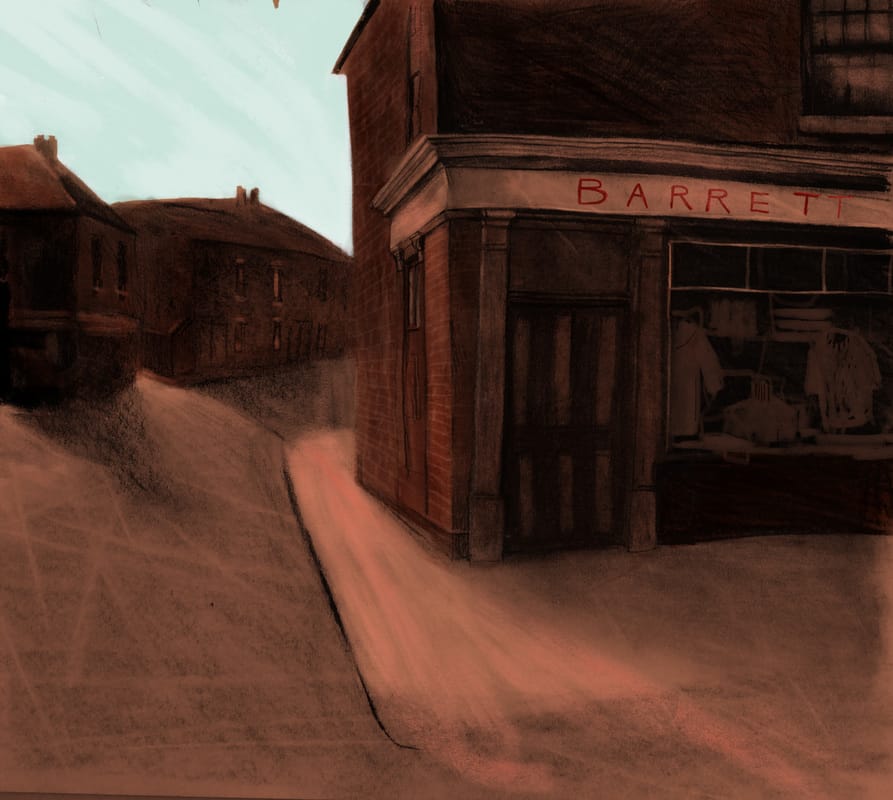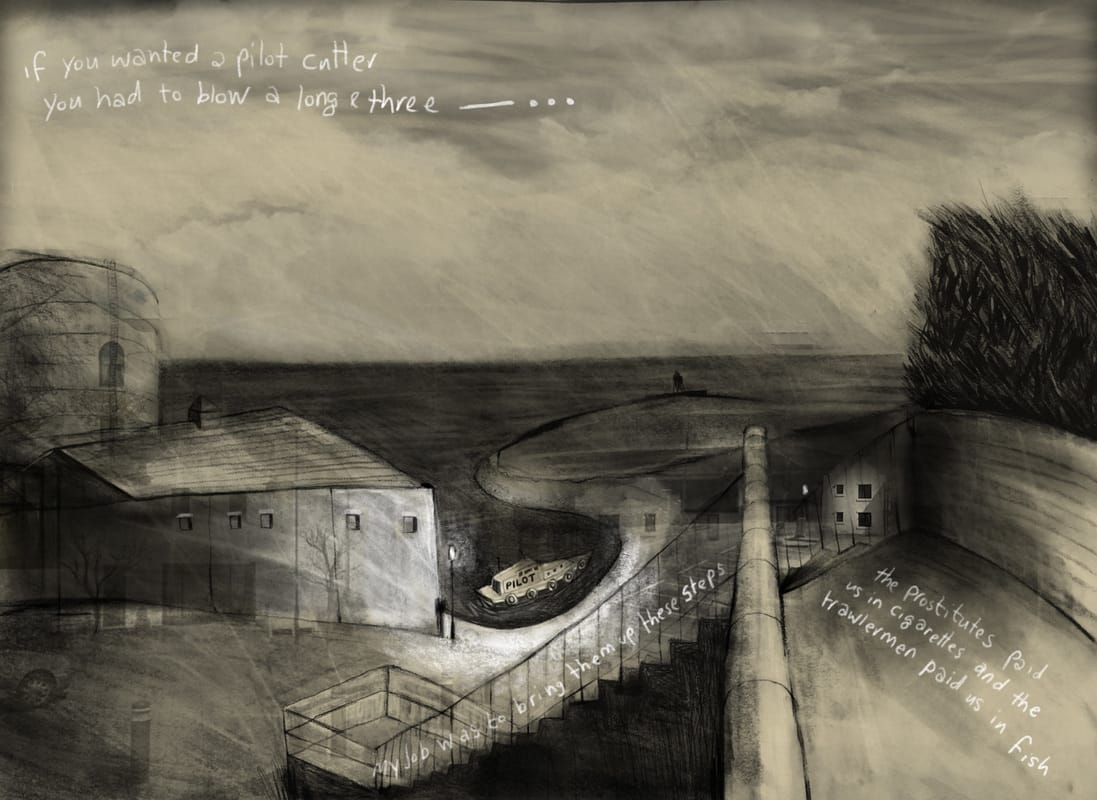|
Fig 1: Layout page: Initial ideas from voice recordings. I began with my mindmap, and indentified some possible areas of research. Colour coding was a useful way to link ideas and reading material. I found articles and books on place, placelessness, and non place. I loved the taxonomy in George Perec’s ‘Species of Spaces’ and his book led me to the work of Auge and so to Rachel Gannon. She has a phenomenological approach to drawing space and her project was very much about her relationship with her subjects and the act of drawing. This idea led me to think about the personal relationships that we have with places, and so to memory of place and virtual places. Drawing a memory (and I had established this was to be a collective family memory) needed an approach, which was inclusive of many viewpoints. The methodology therefore needed to gather information from many sources. I identified four main areas of research;
Looking at the subject through different disciplines informed my process. I discovered that some themes were similar, and this validated my approach. I looked at the methodologies of two illustrators, Leah Fusco and Anne Howeson. Both are working with place/time/memory, and both use multiple sources and methods of collecting data, which they then interpret through their creative work. This method really typifies Werner Herzog’s ‘Ecstatic truth’, which is exactly what I wanted for my drawings. I worked out what I wanted to draw in layout pads (fig1) and wrote lots of notes around my drawings. I like to see everything at once and not be precious. The drawings, that I wanted to work on, began as A2 pieces of work, which I photographed before the digital colour was added. Research was a really important part of this project. I recorded interviews and collected stories and anecdotes about the places I drew. I scoured local history websites and family photo albums, and I looked at historical and contemporary maps of the area. I read up on the local history. I had to base the project in fact, and with primary research because my interpretation of it was intentionally incomplete, subjective and disjointed. I enjoyed this part of the project My process seems logical to me. The ideas progressed as I was working, and particularly once I had gathered the interview material. It took a few weeks to begin on the right path, and I suddenly woke in the middle of the night with the idea. This wouldn’t have happened without all the dead ends, reading and drawing that went before. I've learned: Not to worry, if you do the work, you’ll get somewhere! (Some) digital skills To read widely, outside your discipline Thorough research is like having something in front of you to draw - a sound base in fact. That there's an excellent book delivery service in the UAE (Magrudys) if anyone needs to know and that you can sneak into New York University's library! Arbeia Fort: Experiment with maps This image was an early experiment using archaological maps and their labelling. Barrett's: Experiment with analogue nostalgic colour. I sampled colour from damaged old photos and heightened the contrast. The Long and Three: Interview and narrative. I introduced text as part of the image, which told a story about the location.
Comments are closed.
|
Archives
August 2020
Categories
All
|




 RSS Feed
RSS Feed